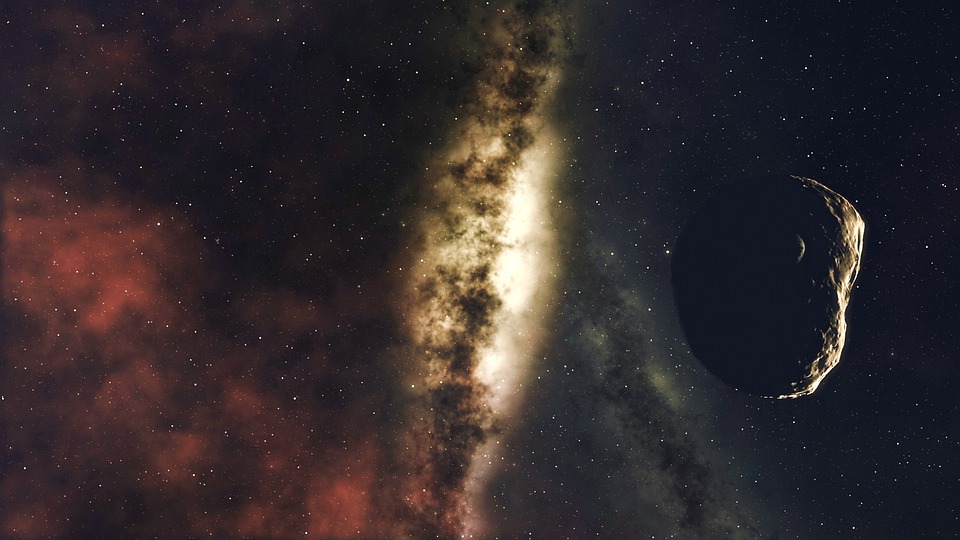More space rocks seem to be approaching Earth’s territory, and a new report reveals another one may bring in disasters. NASA has spotted an asteroid traveling at 63,000 miles per hour, and there is a possibility that it can impact the Earth.
Express reports that the space agency recently tracked down an asteroid named 101955 Bennu but formally known as 1999 RQ36, hurtling towards Earth at a rapid speed of 63,000 miles per hour. NASA has not only labeled this a Potentially Hazardous Object or PHO, but they have also classified RQ36 with the second-highest rating on the Palermo Technical Impact Hazard Scale. Some experts have already warned the space agency to take action should the asteroid enter the atmosphere as it can bring on calamities and disasters once it hits.
As to when it can strike Earth, experts predict that RQ36 may strike the planet in the last quarter of the 22nd century, which is still decades away. Experts predict that it may happen around the years 2175 or 2196.
This asteroid measures about 1,640 feet in diameter, which is equal to the size of the Empire State Building in New York. RQ36 also orbits around the sun once every two years, and once every six years, it makes a close approach with Earth. The closest it has usually gotten is within 0.002 astronomical units, or 185,000 miles, which is nearer than most asteroids that have been classified as Near-Earth Objects have gotten. RQ36 also weighs 68 million tons and is traveling at a speed of 63,000 miles per hour.
Meanwhile, Express also reports the potential disasters that will happen when another kind of asteroid manages to strike the Earth. The astronomers at NASA revealed that over the course of a few hundred thousand years, asteroids that would measure beyond a kilometer could potentially kill millions when it strikes, or cause bigger disasters. They went on to say that the debris would come from the impact would trigger acid rains while blocking sunlight and even firestorms as a result of the remnants of the space rock falling on the surface of the planet.



 FDA Lifts REMS Requirement for CAR-T Cell Cancer Therapies
FDA Lifts REMS Requirement for CAR-T Cell Cancer Therapies  SpaceX Starship Explodes in Texas During Test, Citing Nitrogen Tank Failure
SpaceX Starship Explodes in Texas During Test, Citing Nitrogen Tank Failure  Is space worth the cost? Accounting experts say its value can’t be found in spreadsheets
Is space worth the cost? Accounting experts say its value can’t be found in spreadsheets  Kennedy Sets September Deadline to Uncover Autism Causes Amid Controversy
Kennedy Sets September Deadline to Uncover Autism Causes Amid Controversy  NASA Faces Major Workforce Reduction as 20% of Employees Prepare to Leave
NASA Faces Major Workforce Reduction as 20% of Employees Prepare to Leave  Ancient Mars may have had a carbon cycle − a new study suggests the red planet may have once been warmer, wetter and more favorable for life
Ancient Mars may have had a carbon cycle − a new study suggests the red planet may have once been warmer, wetter and more favorable for life  Trump Administration to Launch Autism Initiatives Targeting Acetaminophen Use and New Treatment Options
Trump Administration to Launch Autism Initiatives Targeting Acetaminophen Use and New Treatment Options  NASA Astronauts Wilmore and Williams Recover After Boeing Starliner Delay
NASA Astronauts Wilmore and Williams Recover After Boeing Starliner Delay  Tabletop particle accelerator could transform medicine and materials science
Tabletop particle accelerator could transform medicine and materials science  Neuralink Expands Brain Implant Trials with 12 Global Patients
Neuralink Expands Brain Implant Trials with 12 Global Patients  Lab-grown meat: you may find it icky, but it could drive forward medical research
Lab-grown meat: you may find it icky, but it could drive forward medical research  Trump and Merck KGaA Partner to Slash IVF Drug Costs and Expand Fertility Coverage
Trump and Merck KGaA Partner to Slash IVF Drug Costs and Expand Fertility Coverage 































